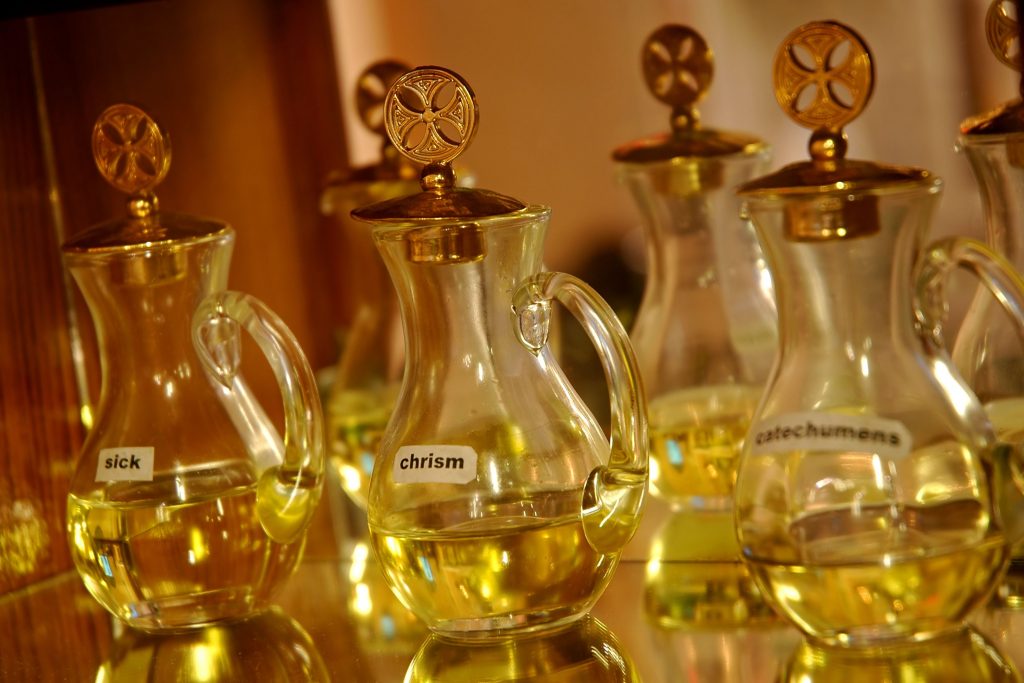“Gestures, language and actions are the physical, visible and public expressions by which human beings understand and manifest their inner life. … Jesus himself used physical signs to manifest his union with the Father and to reveal his mission to the world. … Christ, the incarnate one, used material signs to show to humanity the invisible God. … Effective liturgical signs have a teaching function and encourage full, conscious and active participation, express and strengthen faith, and lead people to God. … The liturgy and its signs and symbols do not exercise merely a teaching function; they also touch and move a person to conversion of heart and not simply to enlightenment of the mind.” (Built of Living Stones: Art, Architecture and Worship, United States Conference of Catholic Bishops, 2000, No. 23-26)
Our liturgies are not just about enlightenment of the mind; hey are about moving our hearts to new and renewed places in the mission of Christ in the world. They are about leading us to deeper and more active commitment to the Gospel message. Our public participation in these rituals shows the world that God is still here among us, working in the lives of all humanity, energizing “the hope to which we are called.” By using the symbol-actions of our liturgies, and their relative symbol-objects, we make visible to the world, the invisible life of God among us. We use our physical senses — sight, taste, touch, smell, hearing — to better know our inner spirit.
These rituals that define us, all started with Jesus and the stories of Scripture, the most prominent one for Christians being the last supper that Jesus shared with his disciples. Jesus used the things that nourish and sustain us to connect us with his message and mission. Jesus told his disciples, and all Christians throughout history, today and forever, “Do this” — act in this way. It is the doing, the remembering, the sharing of the one bread that sustains us. The physical objects used in sacramental celebrations need the ritual actions that hold and carry them to reveal God’s work in us. They require our public action, our participation.
Just as Jesus did at the Last Supper, our actions connect our physical or outer world (the visible) with our spiritual or inner world (the invisible). Symbol-objects can be reminders of God’s presence to us when they are static, but they need our actions to complete them. Symbol-objects need symbol-actions. We prepare and participate in our Catholic rituals so that Christ can live in the world, in and through us. Our ritual actions do not contain God. They give us an environment, a time and place, a communal structure by which we can, as one body, experience a heightened awareness of God that is bigger than what we experience alone with God.
We have just come through the celebration of the rituals of Holy Week. One of the symbol-objects we can use as an example in this discussion is the sacred oil, blessed and consecrated by the archbishop at the Chrism Mass at the Cathedral (on Monday evening of Holy Week in the Archdiocese of Los Angeles), and presented in all our parishes sometime on Holy Thursday. Olive oil was a very prominent product in the life of the people of the regions Jesus traveled. Olive trees were plentiful. The people of the time used the oil from olives in cooking, in medicine, in lighting lamps, in anointing as an act of hospitality, as an act of preparation for burial, and to consecrate or dedicate objects or places.
We continue to use this oil in many of the same ways. Pope Benedict XVI when writing about the Chrism Mass said: “In four sacraments, oil is the sign of God’s goodness reaching out to touch us.” Think for a moment about that touch. The archbishop, who is a part of a lineage of consecrated individuals spanning all time past, from Jesus to the present, blesses and consecrates these oils. Then they are taken back to each parish, stored in a cabinet called an ambry, near the baptismal font in the church building, and used as symbol-objects during the symbol-actions of four of our sacraments that involve that holy touch (baptism, confirmation, anointing of the sick and holy orders). In these rituals, oil is used as a “sign of God’s goodness reaching out to touch us,” through one follower of Christ blessing, consecrating, dedicating or anointing another. Each time in the sacramental rituals, these holy oils are used and we feel that touch, we connect with a physical lineage by which we are bound together in the one body of Christ.

